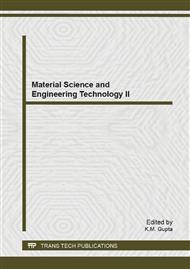p.314
p.321
p.327
p.333
p.338
p.343
p.349
p.359
p.364
The Effect of Mixing Coal with Biomass in Solid Fuel Briquettes
Abstract:
Burning fossil fuel like coal in power plants released carbon dioxide that had been absorbed millions of years ago. Unfortunately, excessive carbon dioxide emission had led to global warming. Malaysia, as one of the major exporters of palm oil, has abundant oil palm mill residues that could be converted into value-added product like biomass fuel briquettes. Fuel briquette with palm kernel shell and palm mesocarp fibre as its main ingredients showed satisfactory fuel characteristics and mechanical properties as a pure biomass fuel briquette. The effects of adding some coal of higher calorific value to the satisfactory biomass fuel briquette were focused in this study. Various coal-biomass fuel blends were used, ranging from 0wt% coal to 50wt% coal. The fuel properties and mechanical properties of pure biomass briquette and briquettes with different amount of coal added were compared experimentally. From the fuel properties tests, it was found that as the coal content in the briquette was increased, the carbon content and calorific value increased. Mechanical property tests on the fuel briquettes showed a mixture of results, with some favored higher portion of coal in the briquette for better handling, transport and storage properties while some favored greater amount of biomass.
Info:
Periodical:
Pages:
338-342
Citation:
Online since:
December 2013
Authors:
Price:
Сopyright:
© 2014 Trans Tech Publications Ltd. All Rights Reserved
Share:
Citation:


